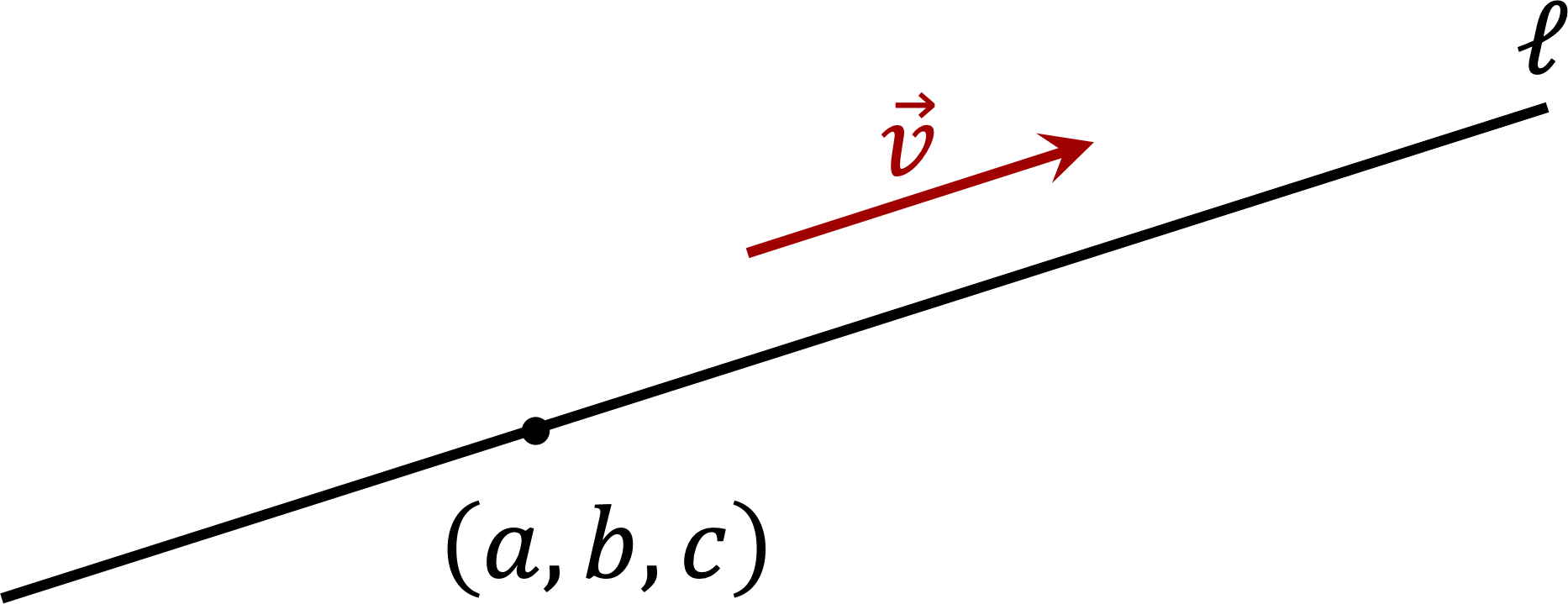\(t_1\) and \(t_2\) such that \(\mathbf{r}_1(t_1) = \mathbf{r}_2(t_2)\text{.}\) That is \(\left\lt -13,16,-14\right> + t_1 \left\lt -4,2,-1\right> = \left\lt -4,4.5,-6.5\right> + t_2 \left\lt 2,1,-1\right>\text{.}\) This is equivalent to the three equations for the components: \(x = -13 - 4 t_1 = -4 + 2 t_2\text{,}\) \(y = 16 + 2 t_1 = 4.5 + 1 t_2\text{,}\) \(z = -14 - 1 t_1 = -6.5 - 1 t_2\text{.}\) Solving the first two equations for \(t_1\) and \(t_2\) in turn yields \(t_1 = -4\) and \(t_2 = 3.5\) Now, substituting these values into the third equation yields \(-14 - 4 * -1 = -6.5 + 3.5 * -1\) \(-10 = -10\) Since this does indeed come out equal, the lines intersect at the point \(\left\lt -13,16,-14\right> - 4 * \left\lt -4,2,-1\right> = \left\lt 3,8,-10\right>\) Note: If the third equation could not be reconciled, that would mean that the lines do not intersect.



